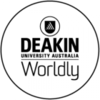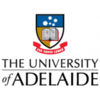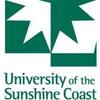These guidelines provide some advice about the establishment of a website representing local Indigenous coastal and marine values. As an example of a recent website created using this approach please see www.derbalnara.org.au
There is a lack of authoritative websites representing coastal Indigenous stories and cultures. A website can illustrate an Indigenous culture's long, ongoing and dynamic relationship to the coast and provide many learning opportunities for our current society. It can thus help ‘close the gap’ in terms of cultural representation of the coast. The website can include Indigenous yarns, artworks and other images, timelines and maps with Indigenous names of coastal places, plants and animals. Information can be drawn from
published literature, archival records and oral interviews. The website can be a resource for use by schools, universities, museums, government sectors, private sectors and community groups involved in the study of local Indigenous maritime heritage. Coastal carers and managers will be able to use the website to better understand the significance of coastal ecosystems to Indigenous folks. Other target audiences are likely to include: the broad community, the Indigenous community, NRM groups and planners.
Personnel
• Indigenous research leader. It is ideal to have a research leader or co-‐leader who is Indigenous to the local area. This person can ensure the whole project is framed in Indigenous terms not Western scientific, bureaucratic or anthropological terms.
• Other researchers. In the research phase, Indigenous and non-‐Indigenous researchers will be involved as language experts, cartographers, interpreters, transcribers, translators, maritime historians, coastal ecologists, cartographers and audiovisual documenters.
• An Indigenous Advisory Group made up of local Elders and Traditional Owners. These people are essential to guide the development of the website in a manner that is culturally safe and appropriate. They will also help establish links with key people to interview. Both the Advisory Group and interviewees are likely to require fees as cultural consultants, so a budget item for this purpose is important.
• Coastal Manager. It is ideal that a key project partner is a local government, a regional grouping of local governments or another coastal manager who can help identify and clarify the target audiences and contribute relevant human and information resources. The Coastal Manager may already have an Indigenous Advisory Group who are willing to be involved.
• Indigenous artists. The website is an opportunity to commission new Indigenous artworks or obtain licences for the use of existing artworks on the website, thereby improving the originality of the website and supporting the Indigenous cultural economy. Careful attention needs to be paid to IP issues. Fees will be required for the artworks and licences, so a budget item for this purpose is important.
• Indigenous Elders and Traditional Owners. These people are key interviewees. They are cultural consultants and likely to be key holders of stories. Again, a budget item for this purpose is important.
• Web designer. A web designer is needed who is capable of working cross-culturally.
Summary of stages of website development

1. Collect information
A wide variety of information sources and visuals should be surveyed as the basis for the website.
a) Review existing databases and oral records held by universities and other research organisations. Conduct a desktop survey of Indigenous language and cultural information in public libraries, museums, government and private collections sites, oral records, literary sources and video documentation.
b) Review relevant maps and other images such as paintings, drawings, photographs and public art since colonisation.
c) Where possible, record new oral interviews with local elders, both male and female with traditional links to the area. Identification of local elders will be done through consultation with the Indigenous Advisory Group and/or the relevant Land and Sea Council and/or Traditional Owner networks.
2. Publicise the research and gain feedback
Present a broad community seminar within the local area. The purpose of this seminar is to:
a) Publicise the research
b) Present findings to date
c) Highlight the development of the website, and d) Seek further input and advice for the website.
3. Compile information and acquire images
Compile all the information that has been acquired. For this stage the tasks are:
a) Write a report outlining findings of desktop surveys
b) Complete transcriptions and translations of oral interviews
c) Commission and/or source artistic representations and photographs of coastal and marine life, places and stories
4. Develop the website
For this stage the tasks are:
a) Create website showing report, videos, artistic visuals, photographs, maps, stories. The site map below is an example of how the website might be structured.
b) The website will require several viewings by the Indigenous Advisory Group, Coastal Manager, fellow researchers and any other partners; time should be allowed for editing and iterations.
Laura Stocker (Curtin University Sustainability Policy Institute), Leonard Collard (University of Western Australia) and Angela Rooney (Curtin University).
Contact: Assoc Prof Laura Stocker, Curtin University Sustainability Policy Institute, L.Stocker@curtin.edu.au










